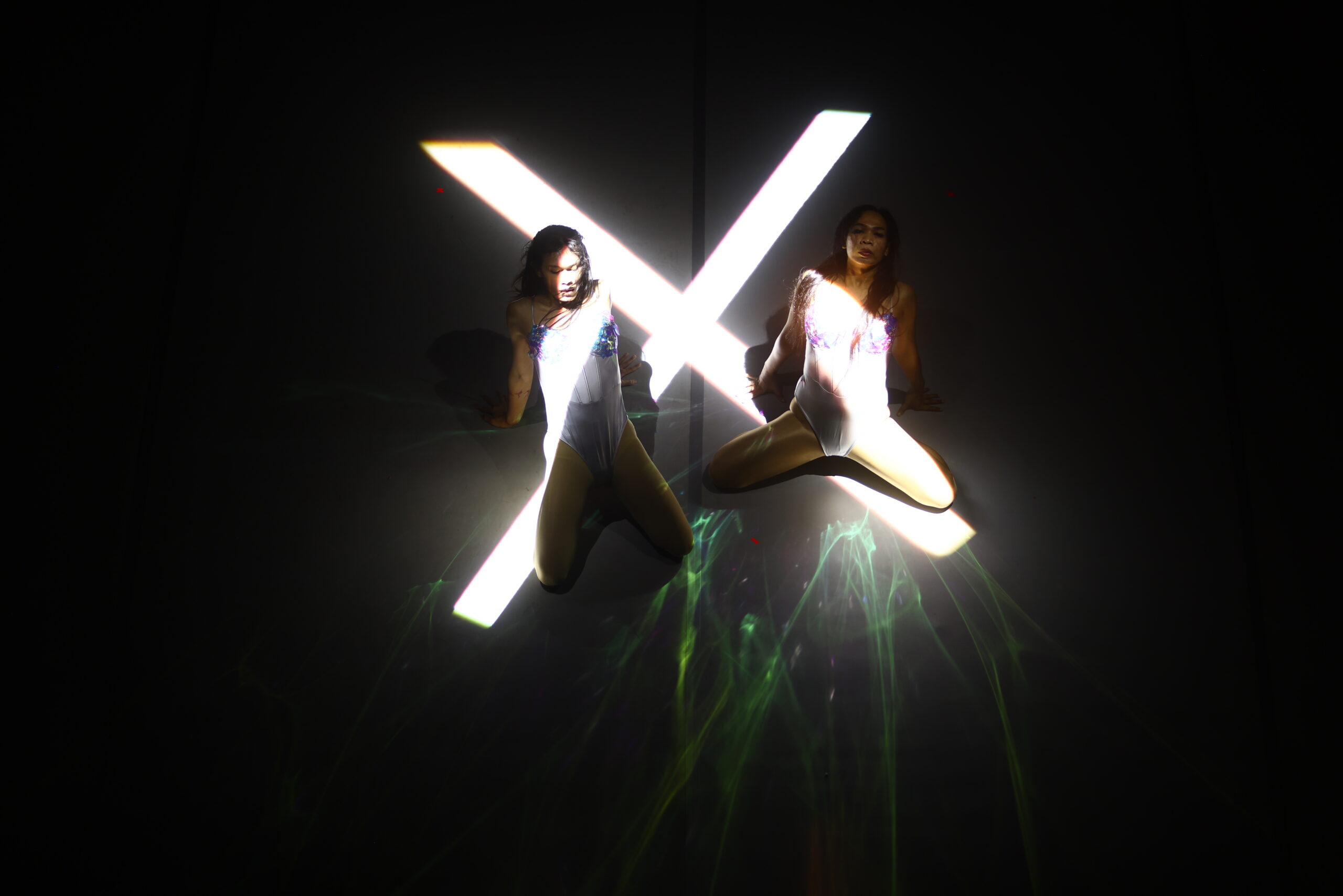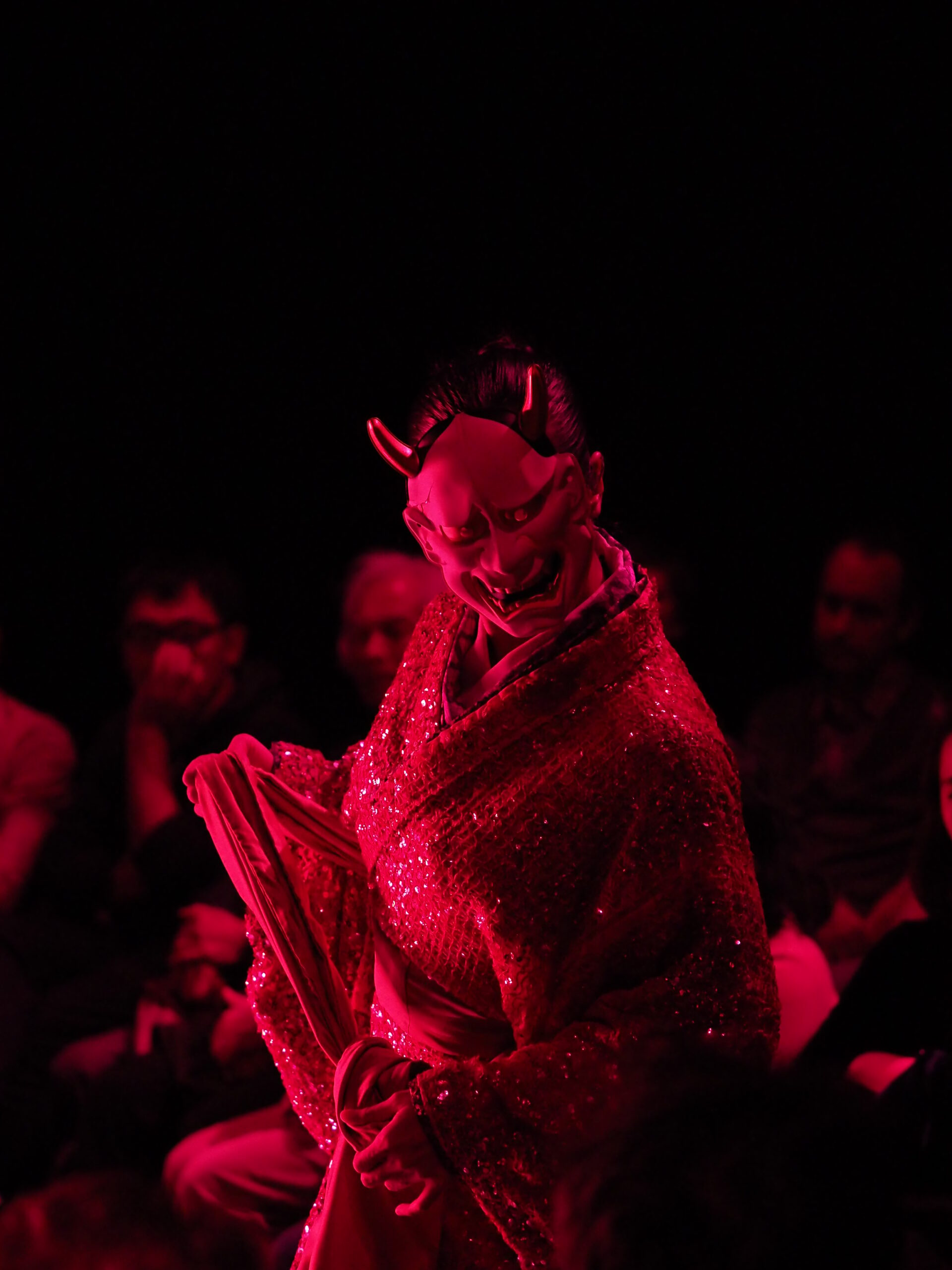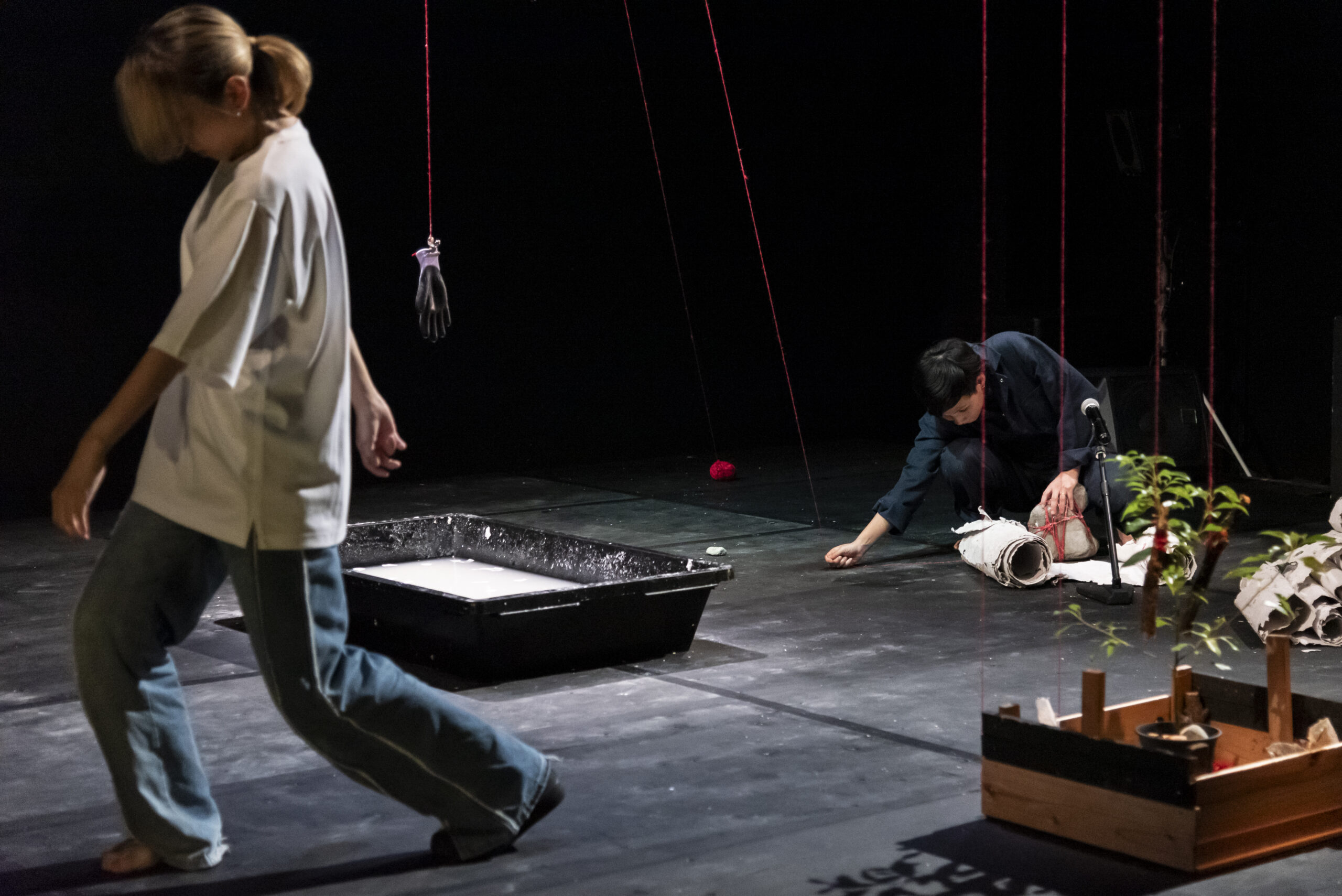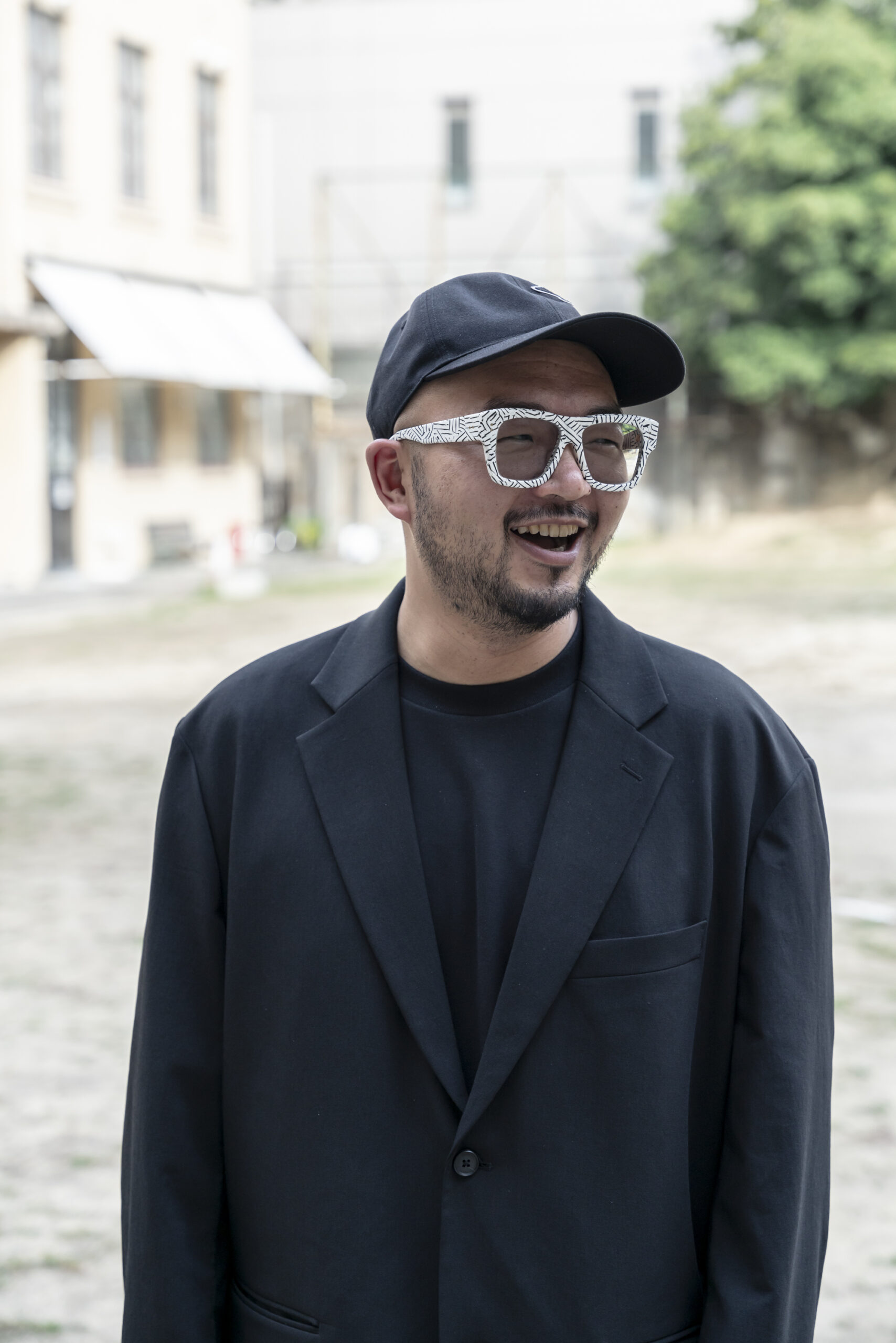Let’s talk about Queer Dance in East Asia
As the title of this piece suggests, in this region, contemporary dance presenters, markets and makers don’t very often talk about ‘queer’ at large. Perhaps it’s because of censorship, the homophobic workplace culture, or because, in general, there aren’t many institutional programmers advocating the queer culture.
The most long-standing Indonesian Dance Festival (IDF), one of its kind in Southeast Asia, organised a public talk in the 2024 edition about queerness, marking the first time in its festival history. Titled The Mystical Gender in the Intersection of Artistic Stage and Daily Life, it featured Indonesian practitioners on the panel, including the pioneering cross-gender dance artist Didik Nini Thowok and young trans-gender artist Ishvara Devati and researcher Joned Suryatmoko. The challenge of unpacking this conversation, which concerned IDF’s House Curator Linda Mayasari and myself as one of the Co-Curators when we conceived this program, is not only about where we can take a point of departure but we’ve also been aware that the notion of queerness is usually understood differently between the Westen-centric perspective and its localised translation in different parts of East Asia.
As the program statement elaborated – “how to open up a broader understanding that non-binary is not just an expression, but also a critical perspective for understanding social realities concerning power dynamics, race, and class.”[1]– the questioning arguably needed first to acknowledge ways dance makers would approach the term queerness between traditional and everyday practices through where they come from.

Ishvara Devati, The Synthetics of Hybrid Beings. Courtesy of Indonesian Dance Festival.
While Thowok positions that Javanese dance history has recognised the fluidity of gender expression, Devati instead advocates human equality and resistance to the sexism of trans-gender bodies in public and artistic realms. Devati’s take on genderqueer relates to up-to-date concerns of the LGBTQIA+ community amid her generation about the visibility and presentation of queer bodies in the performing arts and the general society. Despite the fact in East Asia, gender crossing (usually, male performers act as female characters) has been staged in traditional performances such as the Javanese dance Lengger or rituals of folk religion such as Đạo Mẫu in Vietnam or even Japanese Noh; it doesn’t mean they are or have become ‘queer’ performance.
To approach queerness or queer dance in this context, what matters is to look at what heteronormative norms and hegemony artists interrogate, subvert and deal with and through what means. And indeed, ‘queer’ has gone beyond sexual orientation but a political way of thinking and doing that challenges the social fabrics and construction of things[2].
Prumsodun Ok is one of the few choreographers in this region who has publicly sought to integrate and translate traditional dance into gay and queer identities. Ok, the second generation of Khmer refugees immigrated to the States, returned to the motherland and established the first gay dance company, NATYARASA, at his apartment in Phnom Penh in 2015 to support the young gay community through dance practices. Coming back to approach and learn Khmer classical dance (Robam Preah Reach Trop), initially performed only by females, Ok was to trace and embrace his lost roots in the context of the diaspora in the beginning. To do something called “gay art/ dance” hasn’t been his significant concern. More crucially, holding cultural and social spaces by working with this dance art form eradicated in the Khmer Rouge genocide of the late 1970s in today’s society has shaped Ok’s ways of re-engaging with his community members, including the cultivation of local young talents for the revival of Khmer’s tradition. Instead of making the performance itself gender-crossing, for Ok, to embody the dancing gestures symbolising life circulation[3] and love stories of the repositories is to inhabit their queer identity reconnected with ancestral source, and this is the queerness regarding his socially-engaged practice.

Eisa Jocson, HOST in Yokohama Dance Collection 2017. © Yoichi Tsukada.
Exemplarily, Filipino artist and choreographer Eisa Jocson has created a body of work negotiating binary sexuality of erotic labour, such as Macho Dancer (2013) and Host (2015), interrogating the sexist and racist system of the Westen-and-white centric global economics, in Happyland: Princess (2017) particularly. In Princess, Jocson and collaborator Russ Ligtas re-enacted gestures and the persona of the legendary Disneyland figure Snow White to draw viewers’ attention to the fact that people of colour – brown Filipino in this context– are performing the becoming of Whiteness at the same time dissecting its power that dominates the beauty standard. If Macho Dancer and Host reverse the erotic and touristic gazes to sexualised bodies, Princess then argues how racism and sexism have oppressed the global majority. As a queer disturbance, Jocson has continuously resisted the binary spectatorship about viewing the coloured artist’s body and suggested a non-up-to-bottom means to reflect on the privileged powers in intra-Asian and European art markets and its discrimination.

Eisa Jocson, Princess, 2017, performance documentation featuring Russ Ligtas, Esplanade – Theatres on the Bay, Singapore, 2019. Courtesy of the artist and Esplanade – Theatres on the Bay, Singapore. Photo by Bernie Ng.
Artist, choreographer and theatre maker Geumhyung Jeong from South Korea and her queerness would be a further queer disturbance while radicalising the intimacy and eroticism between the human and objects DIY robots. She has worked intensively with everyday objects to stage various choreographic relations between the artist’s body and props and sex intercourses with them. Many of Jeong’s works, such as Oil Pressure Vibrator (2008), 7 Ways (2009), Rehab Training (2015), and Homemade RC Toy (2019), have foregrounded one’s sexual preference and fetish with objects and technology, which would remain something as let’s pretend it doesn’t exist on arts stage. The coming-out of Jeong for more than a decade has inspired many of the arts community in Asia. Beyond that, there are more ways of confronting and fanaticising sexualities and sexual orientations in non-heteronormative manners and engagements.

Su PinWen ”Girl’s Notes III” in 2020 Taipei Fringe Festival, ©Lin HsuanLang.
In his/their Girl’s Notes trilogy (2018-2020), performance artist Pinwen Su from Taiwan also enacted resistance to male gazes. The artist performed in the nude in Girl’s Note I to redirect how a female body would be viewed and ‘reviewed’ by making coffee, stretching the body and gesturing a manner of “being a girl” while placing and balancing the book “History of Beauty” on his head throughout the performance. In Girls’ Note III, Su deployed a kitchen set to prepare a meal, as if referencing Martha Rosler’s Semiotics of the Kitchen (1975), during which he treated ingredients as sex props and toys while wearing BDSM-like gloves. After adding ingredients to a rice cooker, he undressed himself and leaned his body like a bridge with the rice cooker located under his belly to allow it to turn to steam and burn his body as simulating sex acts.
Both Jeong and Su’s work has challenged social norms of sex, genders and desires and subverted their ordinary spectatorship through the artist’s body, amplifying the voices of sexual minorities. The queerness is profound with practices of decolonisation and sovereignty through sexuality. When sex, genders and desires have been disciplined or heteronormatively framed by colonisers, coming out from those framings and struggles has embarked on a queer tactic and strategy.
In Taiwan, over the past decade[4], the notions of coming out and queerness have been associated with minor Indigenous Peoples’ artistic practices regarding acts of decolonisation. First-Nation choreographers such as Fangas Nayaw and Watan Tusi have staged work and criticisms challenging the notion of “exhibition” (referring to the art form exhibition and “colonial exhibition” ).
Amis Fangas Nayaw hosted Masingkiay (2017), translated as ‘go crazy’, a museum takeover at the MoNTUE in Taipei. It conflated forms of installation, dance, performance and workshop to ‘queer’ the museum into a gathering space, with visitors encountering Indigenous dancers and performers in a social setting where traditional dance, drinks, and conversations were served.
Similarly, Truku choreographer Watan Tusi staged The Spi in 35 Years (2022) (Spi in Truku means ‘dream’), commissioned by the National Theatre of Taiwan to celebrate its 35th anniversary. Responding to the invitation to imagine what the theatre would look like in 2057, Watan utilised the condition of a black box to form a performance-based exhibition or art fair with stalls of fishes, taros and things from their tribes, while in the centre space, he installed a massive piece of fabric performing the weaving process by himself.
In both “exhibitions”, audience members freely strolled around to encounter performers and engage in conversations and actions such as dancing or singing together. These settings by both artists negotiate the stereotyping of Indigenous peoples in Taiwan, which are composed of more than 16 tribes, and the oppression of their histories and cultures. Formosan people have experienced a long history of colonisation by, among others, the Dutch, Japanese, and Chinese Han since the 17th century. Regimes may have changed, but Taiwan has never abandoned its struggle to become a sovereign nation.
With that in mind, Masingkiay and The Spi in 35 Years reclaimed what had been exhibited by colonisers in First Peoples’ history on this island and internationally and enacted social correction in a country with an Indigenous population who, as recently as two decades ago, preferred to remain ‘in the closet’ to avoid discrimination. Both artists queered normative presentations of a theatre and museum. They interrogated arts institutions’ social function by blurring the boundaries between centre and periphery and human and cultural space. Meanwhile, they proposed that participation and community engagement could facilitate research into and implementation of decolonisation.

Nanako Matsumoto & Anchi Lin (Ciwas Tahos), Sticky Hands, Stitched Mountains, 2024. Photo by Haruka Oka. Courtesy of Kyoto Experiment.
A recent case, Sticky Hands, Stitched Mountains (2024) by Atayal-Taiwanese visual artist Anchi Lin (aka Atayal name: Ciwas Tahos) and Japanese choreographer Nanako Matsumoto, has unpacked another kind of queering and decolonial cultural dialogue between Taiwan and Japan[5]. This work speculates a theatrical encounter between Yamamba (山姥 or やまんば) and Temahahoi. The idea of embodying Yamamba comes from Matsumoto’s ongoing research of Yokai Body to rethink what Japanese supernatural beings would inform her choreographic practice and cultural identities. Because of the colonial history, Yokai (translated as Monster in Chinese Mandarin) has been acquainted by the general society of Taiwan through Chinese Han-centric perspectives from the settler colonisers’ legacy. However, if translating Yokai into the Indigenous Taiwanese context, it’s found that Yokai is not a monster but Animism, which is most of First Peoples’ ancestral origins. Recognising the monsterisation of (super-)natural beings is the result of colonial product, and at the same time how most female Yokai figures have been demonised, the multilayered decolonial and queer speculation has begun – for Ciwas, it’s to decolonise the Japanese and Han-Taiwanese relations with Yokai’s understanding; for Matsumoto, it’s to decolonise what’s made the Taiwanese Indigenous history unheard by Japanese general society and education. They then collaboratively developed this work by centralising Indigenous and Feminist approaches.
Having worked with them through this project again reminds me how urgent such queer and decolonial practices in the performing arts are calling in the 2020s.
_photo-by-bozzo.jpg)
Takao Kawaguchi, Rosentanz: Critique of Pure Sexualization, 2023. Photo by bozzo.
Take Rosentanz: Critique of Pure Sexualization (バラ色ダンス 純粋性愛批判, 2023[6]) by Takao Kawaguchi[7], one of the very few queer choreographers and performers in the Japanese art scene performed in RHOM Theatre, Naha Culture Arts Theater and TheatreX. His approach to Tatsumi Hijikata’s masterpiece Rose-colored Dance: To M. Shibusawa’s House (1965) is to look at the (potential) queerness of Butoh’s emergence.
In 1959 the debut of the performance Kinjiki (Forbidden Colors) by Hijikata marked the birth of Butoh, a term coined by Hijikata and Kazuo Ohno, as known as Ankoko Butoh or Buyou (dance of darkness). Throughout the 1960s, this underground Butoh had clearly reacted against the Americanised and West-dominant Japanese dance scene.
As a political act and cultural-activist approach, Butoh represented how a bunch of artists at that time urgently sought reinvention and revival of self-identity in the post-war context and era. Moving away from dancing bodies shaped and formed by ballet and the so-called “Modern Dance” imposed by the Americans, Butoh questioned what dance of the time shall be and look like to Japanese people. How can such questioning ultimately suggest queer dance today motivates Kawaguchi to create this piece – Is Butoh still queering today? How can we see the initial queerness and subversiveness of this dance form in today’s Japanese dance scene?
Conflating forms of party, game, interview, live-streaming, dance and partial reenactment of the original piece, Rosentanz: Critique of Pure Sexualization has become a ‘camp gala’ (as Kawaguchi intentionally interpreted through the notion of camp from Susan Sontag’s 1964 essay Notes on Camp ). With a strategy of deconstruction and subverting, therefore, the queer tendency of this work, perhaps, is not about making Butoh a queer dance art but questioning what makes (contemporary) dance practices and history ‘queer again’ in the present time.
Despite Butoh being globally recognised as representative “Japanese” dance art, has Butoh become like Berlin’s techno scene as part of one’s national intangible cultural heritage[8]? Or has Butoh become no longer ‘contemporary’ among the dance sectors and practitioners whose majority has been ongoingly under West-centric market influence? I’d contest and ponder as Kawaguchi has powerfully reflected on these questions and the heteronormativity of the agenda and problematics of Japanese contemporary dance through this piece.
I believe and advocate the urgency of ‘contemporising’ and ‘complicating’ notions and practices of contemporary dance in East Asia and elsewhere. Let’s keep queering what we East-Asian dance community today have taken as ubiquitous and fashionable, and further re-imagining how we will talk about queer dance here and internationally more often to one another.
▶︎ 日本語訳はこちらから(翻訳:清家愛):「東アジアにおけるクィア・ダンスについて語ろう」
[1] See the program webpage: https://indonesiandancefestival.id/en/event/the-mystical-gender-in-the-intersection-of-artistic-stage-and-daily-life/
[2] See: Jack Halberstam, José Esteban Muñoz, David L. Eng, ‘Introduction’, in What’s Queer About Queer Studies Now?, Duke University Press, 2005, pp. 1-17.
[3] See: An interview with Prumsodun Ok https://www.pbs.org/newshour/brief/314727/prumsodun-ok
[4] Taiwan president gave first apology to Indigenous Peoples in 2016. See the official press: https://english.president.gov.tw/NEWS/4950#:~:text=To%20all%20indigenous%20peoples%20of,see%20no%20need%20to%20apologize.
[5] This work is a fruit resulting from the 2023 ADAM Artist Lab, a platform dedicated to artists in Asia Pacific region to meet and work together. Sticky Hands, Stitched Mountains is co-commisioned and co-produced by Kyoto Experiment, Japan Foundation and Taipei Performing Arts Center which premiere at the 2024 Kyoto Experiment.
[6] See: https://rohmtheatrekyoto.jp/event/103516/
[7] See an interview with the artists: https://brooklynrail.org/2016/09/dance/copy-is-original-takao-kawaguchis-about-kazuo-ohno-reliving-the-butoh-divas-masterpieces/
[8] See: https://www.dw.com/en/berlin-techno-on-germanys-intangible-cultural-heritage-list/a-68515354


